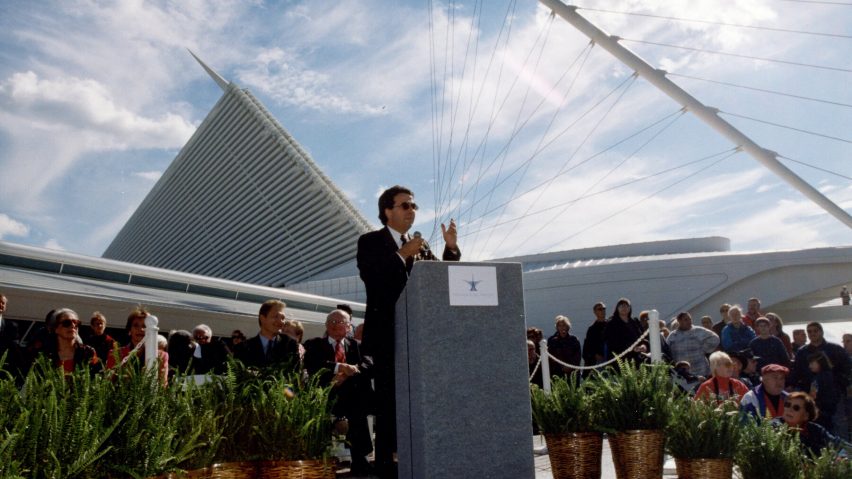
Milwaukee mayor declares September 16 Santiago Calatrava Day
The city of Milwaukee has dedicated September 16 to Spanish architect Santiago Calatrava to commemorate the Quadracci Pavilion at the Milwaukee Art Museum, completed in 2001.
The announcement came during a visit to the museum by the 71-year-old architect to celebrate the 20th anniversary of the building's opening in October 2021.
"I'm speechless," said Calatrava on hearing the announcement at a live press conference. "As an architect, you see who works here and there, I mean, it never happens to me, something like that."
Milwaukee's mayor Cavalier Johnson presented Calatrava with a plaque commemorating the occasion and thanked the architect for jumpstarting "Milwaukee's renaissance". The mayor read a proclamation that referred to the pavilion as an "icon for the city of Milwaukee and a touchstone of civic pride".
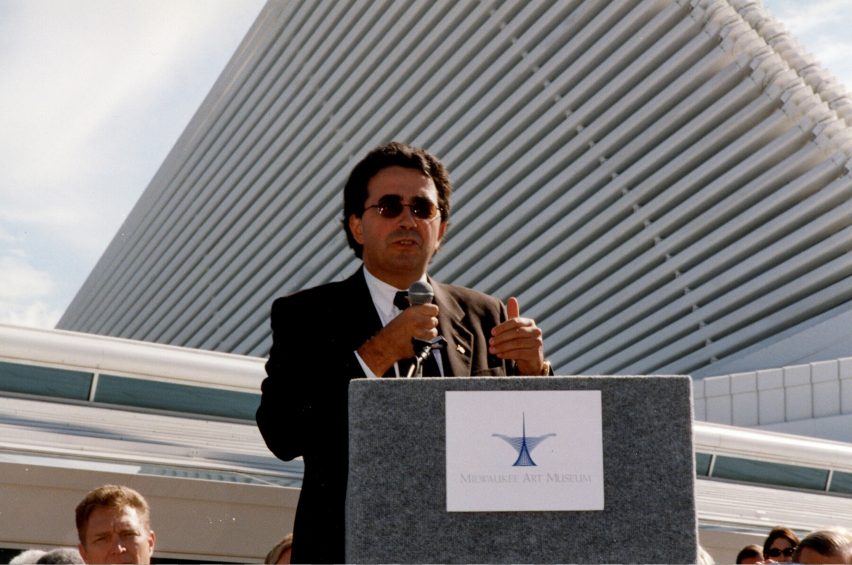
Calatrava — for whom the announcement came as a surprise — took the stage and thanked the people of Milwaukee for the recognition.
The architect also noted the care given to the structure saying that entering the museum again more than 20 years later was "like the opening day".
Since its construction, the Quadracci Pavilion has become a central part of the architectural character of Milwaukee and the addition of the building made the museum the largest arts institution in the state of Wisconsin, a title it still holds.
It has become emblematic of the museum as a whole, with its shape presented on the museum crest, and locals referring to the building simply as "the Calatrava".
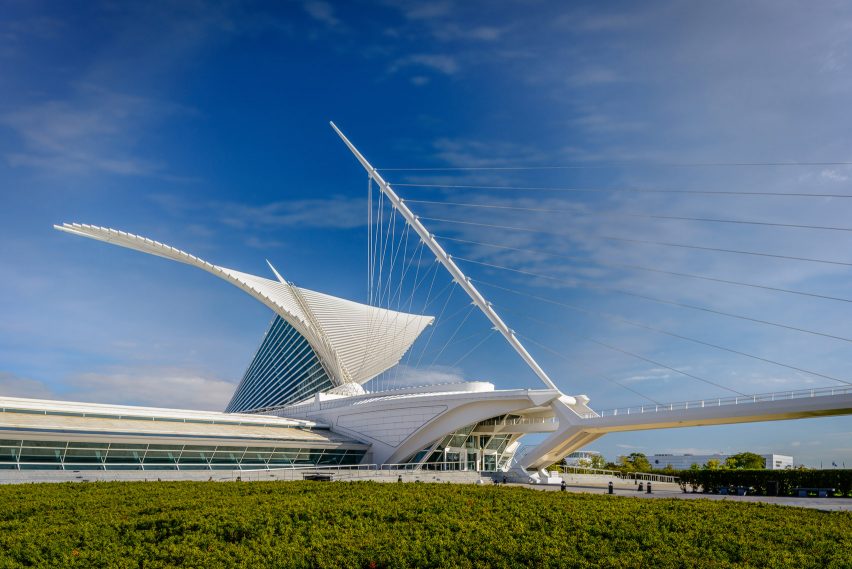
"With the Quadracci Pavilion, Calatrava designed not only an internationally celebrated architectural feat, but a lasting symbol of innovation, inspiration, and momentum for the city of Milwaukee," said the Milwaukee Art Museum.
The museum was Calatrava's first project in the United States. Added to a site that already held buildings by Finish-American modernist architect Eero Saarinen and local architect David Kahler, the 142,050-square-foot (13,197-square-metre) Quadracci Pavilion was designed with three separate but integrated components.
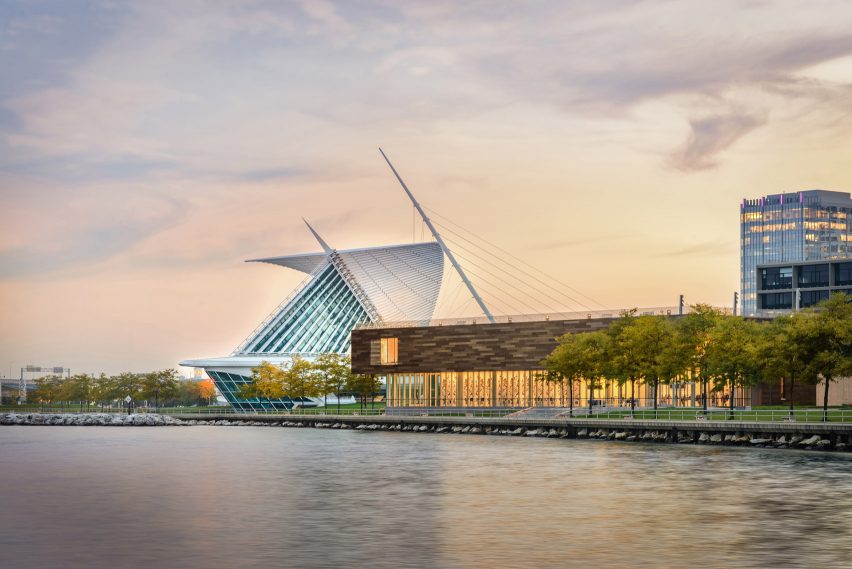
"For a young architect, as I was at the time, working on my first major project in the USA, there was no shortage of motivation to deliver my very best: the picturesque location, the architectural heritage and the world-renowned art collection provided ample inspiration," Calatrava told Dezeen.
"The Art Museum in Milwaukee has remained in my mind as one of the most interesting and uplifting experiences in my whole career."
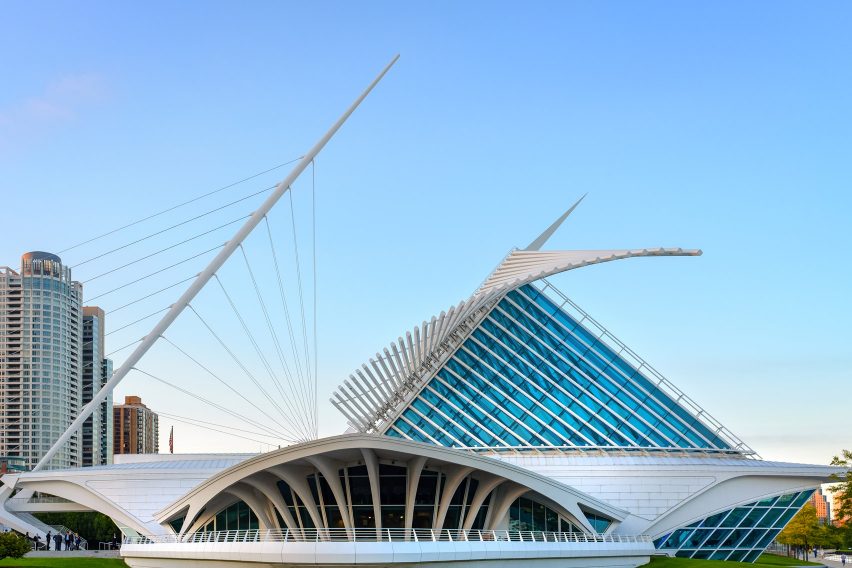
Calatrava said that the beauty of the lake and the presence of many works by US architect Frank Lloyd Wright in the area were large inspirations for the Quadracci Pavilion design.
Jutting out into the lake, Windhover Hall is a large public space that connects two galleries and looks like the bow of a ship from the outside. The ship-like edges of the building continue around the facade in arcs that cantilever over expansive glazing.
Above Windhover Hall are two massive "wings" called the Burke Brise Soliel. The wings are made up of 72 steel beams and the whole structure is movable to provide different shading angles depending on the time of day.
Weighing 90 tons, the wings take approximately 3.5 minutes to close and are guided by a series of sensors that monitor wind speeds. If high speeds are detected, the wings close automatically.
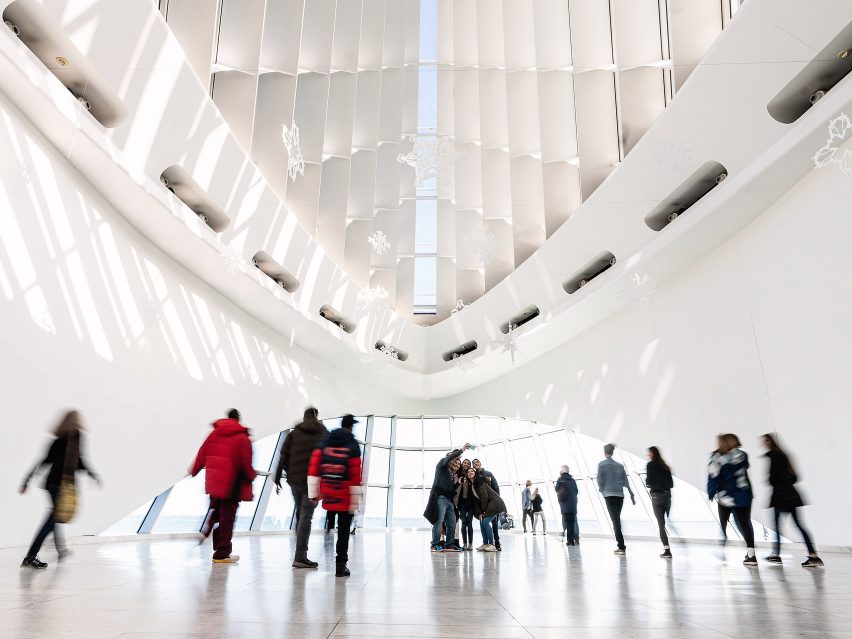
The final component of the design is a long bridge that connects the primary structure to the city. It is partially supported by suspension wires connected to a tall metal mast that rises parallel with the wings of the Burke Brise Soliel.
Calatrava's design required the pouring of concrete into custom wooden moulds in order to achieve the smooth edges of the building and bridge.
The museum announced a free day at the museum as part of the celebrations. The holiday has only been announced for 2022, and it is unclear if it will be extended to future years.
Since the Quadracci Pavilion, Calatrava has designed a number of structures in the United States including Oculus, a transportation hub at the site of the World Trade Center in New York City.
Calatrava founded his studio in 1981 and has since become one of the world's best-known architects.
Other noteworthy projects include the multi-structure City of Arts and Sciences in Valencia, Spain and the Museum of Tomorrow in Rio de Janeiro.